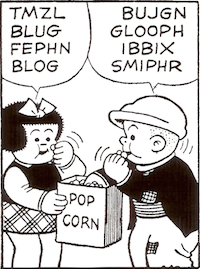Reading someone else’s favorite-book-from-childhood can be an occasion of bafflement, akin to the bafflement one might feel about someone else’s choice in love: what does she see in him?¹ The magic of a favorite book might reside not in what’s visible on the page but in long-nurtured devotion that a grown-up newcomer cannot hope to understand.² E.L. Konigsburg’s From the Mixed-up Files of Mrs. Basil E. Frankweiler (1967) though is a book whose magic is easy to see, even through progressive lenses. My wife Elaine Fine loves the novel, and our fellow blogger Bill Madison just wrote about the novel, so I took their enthusiasm as my cue to read the novel. And I’m glad that I did.
Konigsburg’s novel has a premise that should make any right-thinking kid gleeful with excitement: that it’s possible for two children — twelve-year-old Claudia Kincaid and her nine-year-old brother James — to live undetected in New York’s Metropolitan Museum of Art. Coming in by train from the Connecticut suburbs, Claudia and James discover the anonymity of life in the city, which works entirely to their advantage. They sleep in the museum, eat at the Automat, type (like the poet Frank O’Hara) on a sample Olivetti, and play in Central Park. Claudia is something of a pre-adolescent Holden Caulfield, in flight from daily routine. James and his pockets full of money are along for the ride. Neither child seems overly concerned about the grown-ups’ reactions: Claudia did after all send home a reassuring letter telling her parents not to call the FBI.
Along the way, there are several mysteries, artistic and human, all of which seem beyond easy solving. Claudia learns much about the inevitability of routine and about what it might mean to be “different” — something she desparately longs to be. And sister and brother begin to feel like a team, “a family of two”: even their nicknames for one another, Claude and Jamie, suggest a blurring of the line that might separate girl from boy, sister from brother. And Konigsburg is doing some very sophisticated things with narrative: that’s where Mrs. Basil E. Frankweiler comes in.
A particular pleasure of this novel is Konigsburg’s ear for diction and dialogue. Found change? For Claudia and James, that’s income. Bathroom stalls? They’re booths. The sibling dialogue often sounds like a great American screwball comedy. Here Claudia has just told her brother that their destination is not the woods but a museum:
“Let’s get off this bus and on the train, and I’ll tell you about it.”
Once again James Kincaid felt cheated. “The train! Can’t we even hitchhike to New York?”
“Hitchhike? and take a chance of getting kidnapped or robbed? Or we could even get mugged,” Claudia replied.
“Robbed? Why are you worried about that? It’s mostly my money,” Jamie told her.
“We’re in this together. It’s mostly your money we’re using, but it’s all my idea we’re using. We’ll take the train.”
“Of all the sissy ways to run away and of all the sissy places to run away to. . . .” Jamie mumbled.
He didn’t mumble quite softly enough. Claudia turned on him. “Run away to? How can you run away and to? What kind of language is that?” Claudia asked.
“The American language,” Jamie answered. “American James Kincaidian language.”
From the Mixed-up Files is of course still in print. But could it be newly published as a children’s book today, with a nine-year-old who hums a beer jingle, drinks coffee, and cheats at cards? And a twelve-year-old who brings him with her on the lam? I fear that too many publishers would see the novel as a Bad Influence. Hint: it’s a story, one whose most common side-effect might be a burning desire to spend some time in the Metropolitan Museum of Art — during visiting hours.
¹ Also: What does she see in her? What does he see in her? What does he see in him?
² Here I’ll mention my affection for Clifford Hicks’s
Alvin’s Secret Code, whose sentences still move me more than forty years after I first read them.













